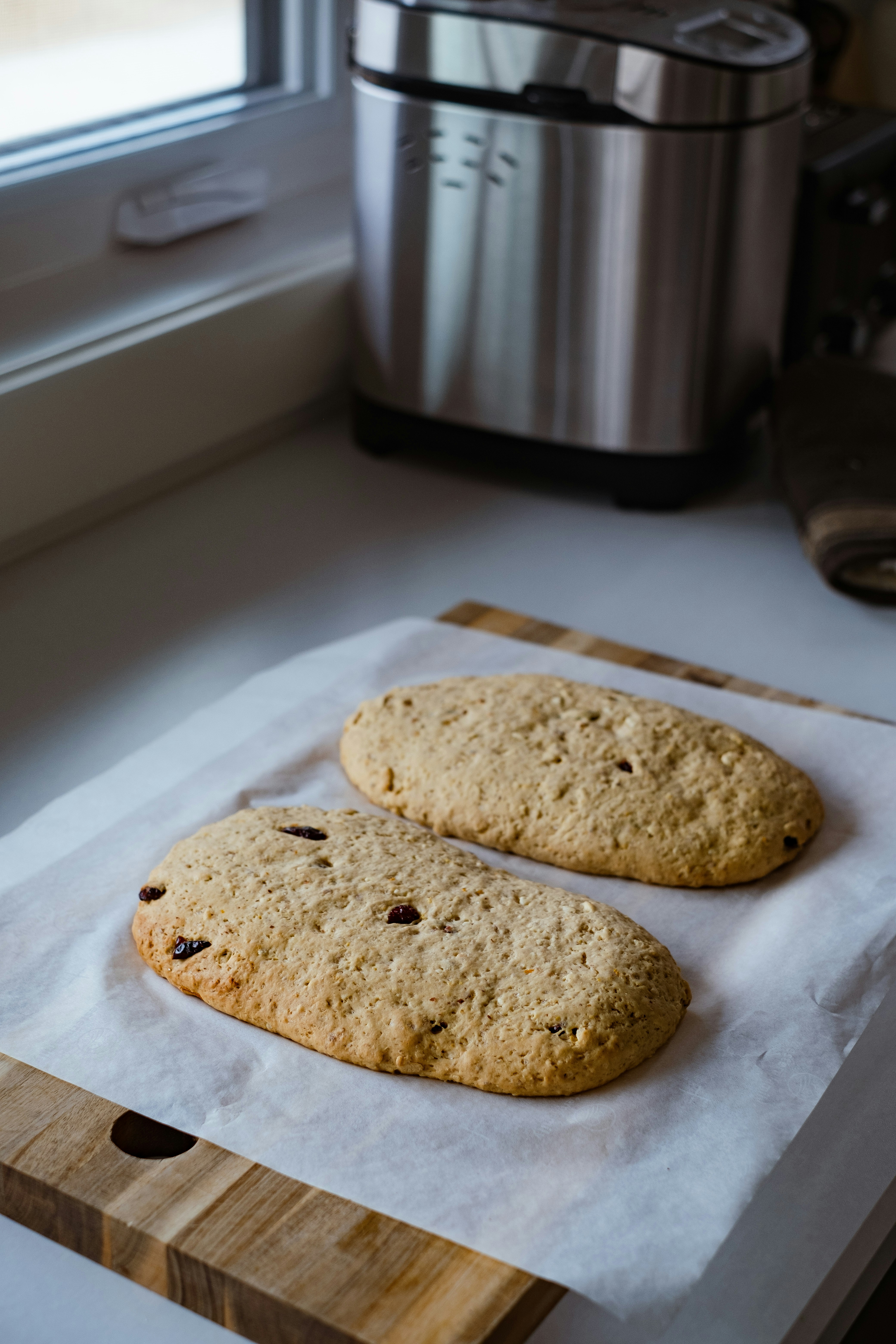A Beginner’s Guide to Baking Your Own Bread at Home

Understanding the Basics of Bread Making
Baking bread at home begins with an understanding of its fundamental concepts and components. At the heart of bread making is the combination of four essential ingredients: flour, water, yeast, and salt. Each ingredient plays a significant role in the final product, contributing not only to flavor but also to the texture and structure of the bread.
Flour serves as the backbone of bread, providing the necessary proteins that form gluten when mixed with water and kneaded. Gluten is crucial as it gives bread its elasticity and ability to rise. Water is essential for hydrating the flour and activating the yeast, which is responsible for fermentation. Yeast is a living organism that ferments sugar in the dough, producing carbon dioxide gas that causes the dough to rise and develop flavor. Finally, salt enhances the overall taste and helps to regulate yeast activity, ensuring a balanced rise.
The science behind baking involves several critical processes, including kneading and fermentation. Kneading is the act of working the dough to develop gluten, resulting in a smooth and elastic texture. This process is vital, as it also helps to distribute the yeast evenly throughout the dough. After kneading, the dough goes through fermentation, where it rests and rises. This step allows flavors to develop and the dough to grow in volume, which is integral for achieving a light and airy loaf.
Beginners will find that there are various methods for preparing bread, ranging from no-knead techniques to traditional artisan styles. Each method offers a different approach, allowing for experimentation and discovery. By grasping these essential concepts of bread making, one can confidently embark on the journey of baking delicious homemade bread.
Essential Tools and Equipment for Home Baking
Baking bread at home can be a gratifying and enriching experience, but having the right tools and equipment is crucial for success. To begin with, a set of mixing bowls is necessary for combining ingredients. Opt for bowls made of stainless steel or glass, as they are durable and non-reactive, ensuring the integrity of your dough. Additionally, measuring cups and spoons are vital for precise ingredient quantity, which is essential for consistent results.
A quality kitchen scale is another important tool, especially for those who prefer working with weight measurements, allowing for more accuracy in ingredient proportions. When it comes to baking itself, a baking stone or sheet is essential. A baking stone distributes heat evenly, providing that crispy crust that many home bakers strive for. Alternatively, a heavy-duty baking sheet will suffice for those just starting out.
Investing in a loaf pan is also essential if you are planning to make sandwich bread. Choose a pan made of heavy-duty materials to avoid warping during high-heat baking. Furthermore, a thermometer can be beneficial to check the internal temperature of the bread, ensuring it reaches the perfect doneness. Many bakers also find it useful to have a dough scraper handy for easier handling of the dough.
While the aforementioned tools are essentials, there are several optional gadgets that can elevate your baking experience. A stand mixer, for example, can streamline the mixing and kneading processes, especially when handling larger batches. Bread scoring tools allow for precise cuts on the surface of the dough, improving aesthetics and helping regulate oven spring. By carefully selecting quality tools, beginners can enhance their skills and enjoy the bread-making journey more fully.
Step-by-Step Guide to Your First Bread Recipe
Baking your first loaf of bread can be a rewarding and fulfilling experience. To get started, gather the following ingredients: 3 cups of all-purpose flour, 1 packet (2¼ teaspoons) of active dry yeast, 1 teaspoon of salt, 1 tablespoon of sugar, and 1 cup of warm water (110°F/43°C). Ensure all your ingredients are fresh for the best results.
Begin by mixing the warm water and sugar in a small bowl. Sprinkle the yeast on top and let it sit for about 5-10 minutes until it becomes frothy. This process activates the yeast, which is crucial for your bread’s rise. While waiting, combine the flour and salt in a large mixing bowl. Once the yeast mixture is ready, add it to the flour mixture.
Using a wooden spoon or your hands, mix the ingredients until a shaggy dough forms. Transfer the dough onto a lightly floured surface and begin kneading. Kneading helps develop gluten, giving your bread its structure. Press the dough with the heel of your hand, fold it over, and repeat this process for approximately 8-10 minutes, until the dough is smooth and elastic.
Next, place the kneaded dough into a lightly greased bowl and cover it with a clean kitchen towel. Let the dough ferment in a warm place for 1-2 hours until it doubles in size. This fermentation process is essential as it allows air bubbles to form, contributing to the bread’s texture.
After the dough has risen, punch it down gently to release the air. Transfer it onto a floured surface again and shape it into a loaf. Place the shaped dough into a greased loaf pan and allow it to rise for another 30 minutes. Preheat your oven to 375°F (190°C) during this time.
Finally, bake the loaf in the preheated oven for 30-35 minutes until it turns golden brown and sounds hollow when tapped on the bottom. Once baked, allow it to cool on a wire rack before slicing. Should you encounter issues like dense bread or excessive sticking, consider adjusting the kneading time, moisture levels, or baking temperature. Each of these factors plays a crucial role in achieving a perfect loaf.
Exploring Variations and Flavor Enhancements
Baking your own bread at home opens up a world of opportunities to customize flavors and textures, inviting creativity into this timeless culinary tradition. One of the simplest ways to enhance your bread is by experimenting with different types of flours. While traditional bread recipes often call for all-purpose flour, incorporating whole wheat, rye, or spelt can impart unique flavors and increase the nutritional profile of your bread. Each flour type brings its distinct characteristics, influencing the texture and taste, which can result in a delightful surprise for the palate.
Moreover, adding seeds and grains is a popular method for further enriching your homemade bread. Ingredients such as sunflower seeds, chia seeds, or rolled oats not only add a pleasing crunch but also boost the bread’s nutritional value. Additionally, these ingredients can be sprinkled on top before baking or mixed into the dough to create a visually appealing and hearty loaf.
Herbs and spices also offer an exciting avenue for flavor enhancement. Fresh or dried herbs like rosemary, thyme, or oregano can transform a standard loaf into a fragrant experience, perfect for pairing with soups and salads. Similarly, incorporating spices such as cinnamon or nutmeg opens up the possibility of creating sweet loaves, ideal for breakfast or dessert. Considering sweet variations, you might explore adding ingredients like caramelized onions, sun-dried tomatoes, or even chocolate chips, inspiring a new culinary venture beyond traditional bread.
Ultimately, the joy of baking lies in the process of experimentation. By trying various ingredients, textures, and flavors, bakers at all skill levels can express their creativity and develop a personalized approach to bread making. This spirit of experimentation not only enhances the overall baking experience but also emboldens beginners to explore new realms within their culinary journey.
